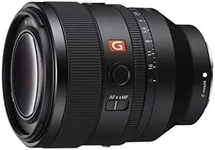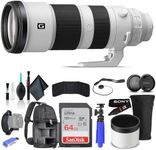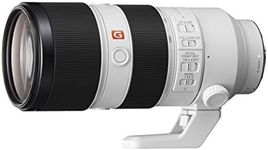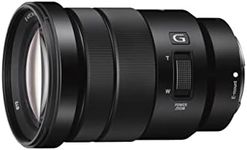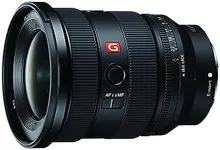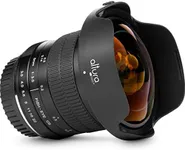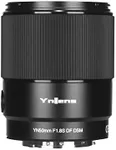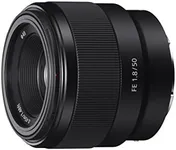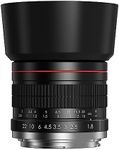Buying Guide for the Best Sony Camera Lenses
Choosing the right Sony camera lens can significantly enhance your photography experience. The right lens can help you capture stunning images, whether you're shooting landscapes, portraits, or action shots. To make an informed decision, it's important to understand the key specifications of camera lenses and how they align with your photography needs. Here are some essential specs to consider when selecting a Sony camera lens.Focal LengthFocal length determines the field of view and magnification of the lens. It is measured in millimeters (mm). A shorter focal length (e.g., 16-35mm) offers a wider field of view, ideal for landscapes and architecture. A medium focal length (e.g., 50mm) is great for portraits and everyday photography. Longer focal lengths (e.g., 70-200mm) provide greater magnification, perfect for wildlife and sports photography. Choose a focal length based on the type of photography you plan to do most often.
ApertureAperture refers to the size of the lens opening that allows light to enter the camera. It is expressed as an f-number (e.g., f/1.8, f/4). A lower f-number means a larger aperture, which allows more light and is beneficial for low-light conditions and achieving a shallow depth of field (blurry background). Higher f-numbers mean smaller apertures, suitable for well-lit conditions and greater depth of field. If you often shoot in low light or want to create a bokeh effect, opt for a lens with a larger aperture (lower f-number).
Image StabilizationImage stabilization helps reduce blur caused by camera shake, especially in low-light conditions or when using longer focal lengths. Some lenses come with built-in stabilization, which can be very useful for handheld shooting. If you frequently shoot in situations where a tripod isn't practical, or if you use telephoto lenses, consider a lens with image stabilization to ensure sharper images.
Lens MountThe lens mount is the interface between the camera body and the lens. Sony cameras typically use the E-mount or A-mount. Ensure that the lens you choose is compatible with your camera's mount. E-mount lenses are designed for Sony's mirrorless cameras, while A-mount lenses are for their DSLR and SLT cameras. Verify your camera's mount type and select a lens that matches it.
AutofocusAutofocus (AF) capability is crucial for capturing sharp images quickly and accurately. Some lenses have faster and quieter autofocus motors, which are beneficial for both photography and videography. If you shoot fast-moving subjects, such as in sports or wildlife photography, look for lenses with advanced autofocus systems. For general use, a standard autofocus system should suffice.
Lens Elements and CoatingsLens elements and coatings affect image quality by reducing aberrations, flare, and ghosting. High-quality lenses often feature special elements like aspherical or extra-low dispersion (ED) glass, and coatings like Nano AR or fluorine. These enhancements improve sharpness, contrast, and color accuracy. If image quality is a top priority, especially for professional work, consider lenses with advanced elements and coatings.
Size and WeightThe size and weight of a lens can impact your shooting experience, especially if you plan to carry your camera for extended periods. Larger, heavier lenses may offer better performance but can be cumbersome. Smaller, lighter lenses are more portable and convenient for travel and street photography. Consider your comfort and shooting style when choosing the size and weight of your lens.
Weather SealingWeather sealing protects the lens from dust, moisture, and harsh weather conditions. This feature is important if you often shoot outdoors or in challenging environments. Lenses with weather sealing are more durable and reliable in adverse conditions. If you frequently shoot in unpredictable weather, investing in a weather-sealed lens can be beneficial.

